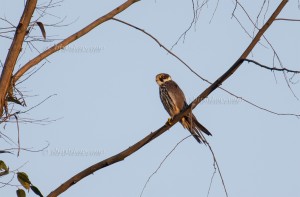 The Nyika National Park, in the north-western corner of Malawi is the largest National Park in Malawi. It spreads over 3,000 sq km. On the Nyika Plateau at an altitude of approx. 2,000 m asl and above you can find typical grassland and mountainous vegetation. Wide gently rolling grasslands alternate with valleys covered with fern. There are areas where light gray, often almost white boulders intersperse among the grass. Miombo woodland can still be found on the slopes of the plateau. Several streams and small rivers run through the park. Along the streams and in the valleys some kind of subtropical forest remains. Nowhere on earth you can see so many Southern Reedbuck (Redunca arundinum) – also called Rietbok or Common Reedbuck – as in this park. You can see small groups from two to eight animals almost on every hill and every valley. Everywhere where grassland is to live on. Among the birds Stanley Bustard (Neotis denhami) and Wattled Crane (Burgeranus carunculatus) are the highlights.
The Nyika National Park, in the north-western corner of Malawi is the largest National Park in Malawi. It spreads over 3,000 sq km. On the Nyika Plateau at an altitude of approx. 2,000 m asl and above you can find typical grassland and mountainous vegetation. Wide gently rolling grasslands alternate with valleys covered with fern. There are areas where light gray, often almost white boulders intersperse among the grass. Miombo woodland can still be found on the slopes of the plateau. Several streams and small rivers run through the park. Along the streams and in the valleys some kind of subtropical forest remains. Nowhere on earth you can see so many Southern Reedbuck (Redunca arundinum) – also called Rietbok or Common Reedbuck – as in this park. You can see small groups from two to eight animals almost on every hill and every valley. Everywhere where grassland is to live on. Among the birds Stanley Bustard (Neotis denhami) and Wattled Crane (Burgeranus carunculatus) are the highlights.
In March 2005, I was lucky to combine a trip to celebrate the opening of a Natural Museum in Karonga with a short trip to the The Nyika National Park, which is not too far from the lake shore of Karonga. On the second day, on a late afternoon I had put up with my Land Rover Discovery to explore the grasslands. The trip in mid-March had been already very successfully with sightings of Pallid Harriers (Circus macrourus), Common Quail (Coturnix coturnix) and Stanley Bustard (Neotis denhami) and even some Wattled Crane (Burgeranus carunculatus). Well it’s was already 5:00 pm when I was on my way back. In the West, a giant cloud barrier build the sky. In some parts of the park it rains out in torrents. But above me everything was still perfectly immersed in blue color. Shortly after, the sun was blocked by a far reaching bank of clouds. A squad of six very elegant raptors flying flat over the grasslands fascinated me.
“Look like falcons“, I was thinking immediately. Too bad that I could not identify the birds in the backlight and on that distance. But wait, there is another one flying elegantly over the ridge. Yes, these are clearly Eurasian Hobbies (Falco subbuteo). Low flying over the grassland and looking obviously to catch flying insects. Big prey, as dragonflies, obviously is not the food. They are for sure on migration. A little later on a granite block, I saw another bird of prey. It sits beautifully illuminated against the gray cloudy sky on an exposed boulder that lies on the ridge. It is a male Montagu’s Harrier (Circus pygargus) that just crimps its prey. First I was struggling to identify the harrier for a Pallid Harrier. But the male bird clearly shows its dark-gray breast. Soon the evening sun falls behind the horizon. What a beautiful day!
In the course of this trip and another trip in late fall a year later, it turned out that Eurasian Hobbies (Falco subbuteo) during both migration seasons are by no means rare in Malawi. The picture of the blog shows an adult Eurasian Hobby in a eucalyptus tree near the Mulunguzi Marsh on the Zomba Plateau near Blantyre. The Mulunguzi Marsh on the Zomba Plateau is characterized by a similar open vegetation such as the Nyika Plateau. On the Zomba plateau grows a special mountain vegetation with palm trees and Dracaenen. There are grassy rolling hills, partly dense primeval forest, conifer plantations and vast open wetlands. These waterfalls impress by a breathtaking beauty and the mountain ridges with a wide view over the country.
This image of a Common Hobby on the wintering ground in Malawi is just a taste of what you will find in the gallery “Picture-Shop“. Just leave a message on bird-lens.com if we can serve you with additional images. Not only traveling to remote places in Malawi but also detailed knowledge of the nearby homeground was very helpful to take pictures of the birds of the Western Palearctic.